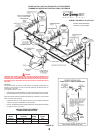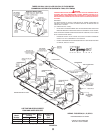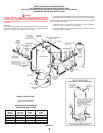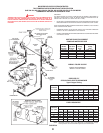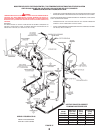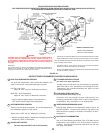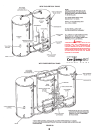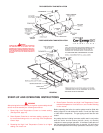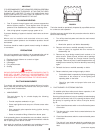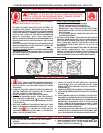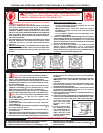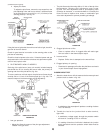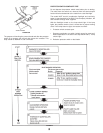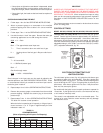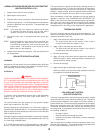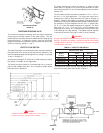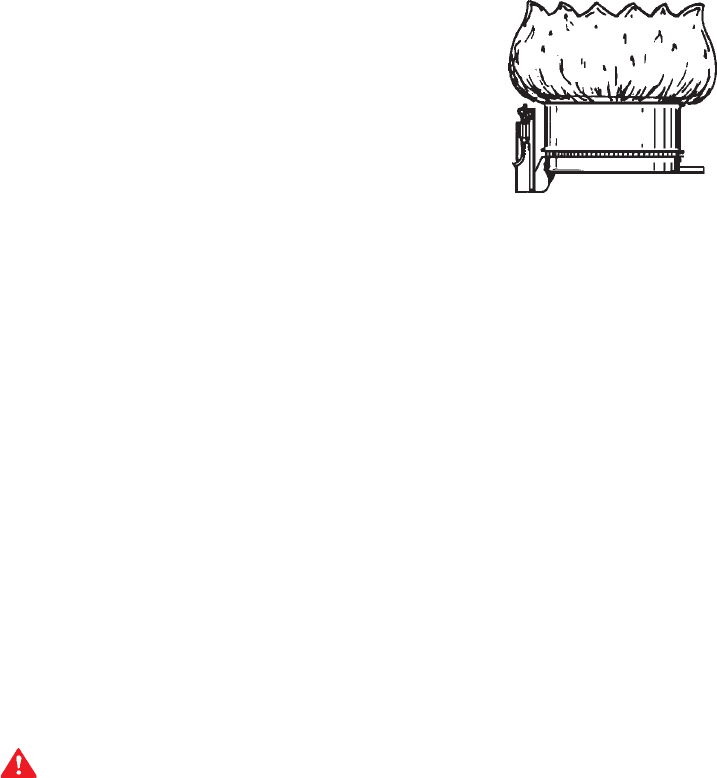
4646
4646
46
IMPORTANT
IT IS RECOMMENDED THAT A QUALIFIED PERSON PERFORM
THE INITIAL FIRING OF THE BOILER. AT THIS TIME THE USER
SHOULD NOT HESITATE TO ASK THE INDIVIDUAL ANY
QUESTIONS WHICH HE MAY HAVE IN REGARD TO THE
OPERATION AND MAINTENANCE OF THE UNIT.
FILLING AND VENTING
1. Fast fill system through bypass until pressure approaches
desired system pressure. Close bypass valve and permit
pressure to be established by the pressure reducing valve.
2. Vent all high points in system to purge system of air.
If pressure bleeding of system is desired, install valves as shown
in fig. 1.
Where cast iron radiation and motorized valves are used,
conventional system pressure and installation practices should
be followed.
Provisions should be made to permit manual venting of radiators
or convectors.
PRECAUTIONS
If the unit is exposed to the following, do not operate boiler until all
corrective steps have been made by a qualified serviceman:
1. Flooding to level of burner or controls or higher.
2. Exposure to fire.
3. If damaged.
4. Firing without water.
5. Sooting
CAUTION
SHOULD OVERHEATING OCCUR OR THE GAS SUPPLY FAIL TO
SHUT OFF, DO NOT TURN OFF OR DISCONNECT THE
ELECTRICAL SUPPLY TO THE PUMP. INSTEAD, SHUTOFF THE
GAS SUPPLY AT A LOCATION EXTERNAL TO THE APPLIANCE.
PILOT AND MAIN BURNER
To maintain safe operation and the greatest efficiency from the
boiler, check the pilot and the main burner once every six months
for proper flame characteristics.
1. MAIN BURNER
The main burner, fig. 41, should display the following
characteristics:
• Provide complete combustion of gas.
• Cause rapid ignition and carryover of flame across entire
burner.
• Give reasonably quiet operation during ignition, burning
and extinction.
• Cause no excessive lifting of flame from burner ports.
If the proceeding burner characteristics are not evident, check for
accumulation of lint or other foreign material that restricts or blocks
the air openings to the burner or boiler.
Also check for good flow of combustion and ventilating air to the
unit. Maintain a clear area around the boiler at all times.
FIGURE 41
The boiler should be periodically inspected by a qualified servicer
for continuous safe operation.
Qualified servicers should follow this procedure when the boiler’s
burners need cleaning.
1. Turn off the electrical power and close the main manual
gas shutoff valve.
• Allow boiler parts to cool before disassembly.
2. Remove main burner manifold assembly from boiler.
• Refer to parts list supplied with this manual for
disassembly aid.
3. Remove any loose foreign material such as dust or lint
with a vacuum. Check all ports, orifices, and air openings
for blockage. Dislodge any foreign material causing
blockage. Remove any soot or carbon deposits with a rag
making sure to remove any lint left on burner by vacuuming
again.
4. Reinstall the burner manifold assembly on boiler.
5. Restore electrical power and gas supply to boiler.
• Put the boiler back in operation by following the lighting
instructions in this manual or on the lighting and
operating label on the boiler.
• Check for gas leaks and proper boiler and vent
operation.
2. PILOT BURNER - ELECTRONIC IGNITION
To establish pilot flame without main burner operation, it will
be necessary to perform the following steps:
Servicing of the pilot burner (every six months) includes keeping
pilot shield (not shown) free of lint, cleaning the burner head,
the primary air opening and the orifice of the pilot burner,
fig. 42.
1. Open fused disconnect switch or shut off electrical power
to the boiler.
2. Turn the gas valve control knob counterclockwise to the
“PILOT” position.
3. Close fused disconnect switch to restore electrical power
to the boiler.
The pilot will now ignite provided the combination gas
valve knob is set at “PILOT” and the system is calling for
heat.
(Continued on Page49)



